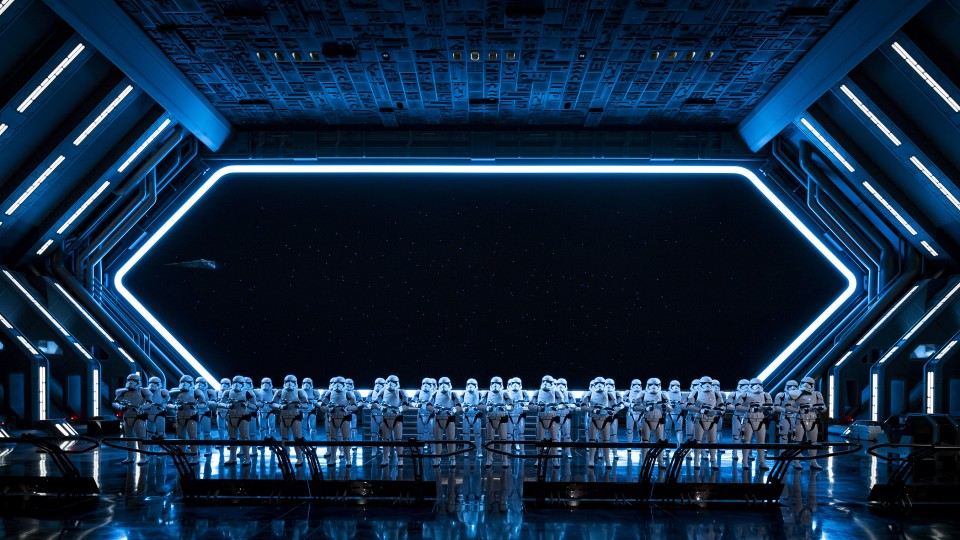4. The Losing Streak
Disney bounced back for a time with the successful opening of the Disney Cruise Line as well as Disney’s Animal Kingdom. Michael Eisner may have had his issues, but the man loved the parks, respected Walt’s legacy (even if he didn’t know what the heck to do with Epcot), and he knew how to stay within a budget. It wasn’t long, though before trouble became apparent in the waters. The first major project to go under was Disney’s planned sixth gate on US soil—Disney’s America. The concept was to build a park that celebrated American history and brought it to vivid life for guests, apparently inspired after Eisner visited Colonial Williamsburg.
The planned location would have been in Virginia, not far from Washington D.C, and while Disney’s America initially had great support, in a situation eerily similar to EuroDisney, locals and politicians quickly turned against the project. Virginians didn’t want Disney poaching business from historic tourist sites, and historians were especially uncomfortable with the idea of Disney scrubbing history to fit commercial aims. Everything from the land’s location to its concept were criticized, and even when Disney tried to retool the concept to simply focus on celebrating what made America great, they just couldn’t win. The financial risk was too great, so the project was scrapped. Later, the project was almost revived when Disney had the chance to buy Knott’s Berry Farm, but that deal never panned out.
Imagineers quickly began feeling the constraints of budget cuts, and this became apparent when Disney’s California Adventure opened in 2001. The park was widely criticized as a lackluster successor to Disney’s other gates, and all the issues seemed to stem from obvious corner-cutting. Disney’s California Adventure lacked the immersiveness, continuity of theming, and charm people expected from Disney parks. It didn’t even include a berm to block out downtown Anaheim. It felt like an amusement park more than a theme park, and slapdash attractions like Superstar Limo only worsened the blow.
The company flubbed again a year later with the opening of Walt Disney Studios Park in 2002, a second gate Disney was contractually obliged to add to Disneyland Paris. Even worse than Disney’s California Adventure, the park utterly lacked immersive theming, settling for a vague semblance of an American studio with rides tucked in beige studio buildings. Like Disney’s California Adventure, the park was not well-received. The streak continued with the opening of Hong Kong Disneyland in 2005. The park was too small to keep guests in all day, and once again, Disney missed the mark by not understanding Chinese culture or what the Chinese valued in a theme park experience.
These flubs had grim effects on Disneyland and Walt Disney World. Epcot struggled to maintain sponsors and was left hanging in the 80’s. Disney’s Animal Kingdom lost one of its best concepts when the Beastly Kingdom land was shelved in favor of Camp Minnie-Mickey and Dinoland U.S.A. Imagineers felt stifled, and whispers in the company resounded that the course was no longer sustainable.
In 2005, Michael Eisner stepped down as CEO and was succeeded by Bob Iger. While Iger has definitely faced his own share of criticism, his arrival triggered a number of important events that ultimately led Disney out of the lurch.
Disney made an important shift back towards creativity, bolstering their theme parks, and acquiring new intellectual properties like Star Wars and Marvel to draw a new generation of guests to the Disney legacy. Iger quickly revealed that he was willing to take risks, but he hedged his bets on pushing Disney’s well-known intellectual properties. While this strategy proved controversial at times, there’s no question that Disney parks ultimately saw a marked improvement in quality and drawing new guests.
Disneyland Paris found that key sweet spot of adaptation to local culture. Walt Disney Studios Park developed new rides and theming to draw guests in. Disney’s California Adventure evolved into a true celebration of California’s beauty and charm, particularly in the arrival of Cars Land. Where Hong Kong Disneyland fell short, Shanghai Disneyland corrected those mistakes with a beautiful park that uniquely celebrated Chinese culture. A combination of good business sense and bold creativity saw Disney through to a new era of explosive growth across the 2010’s.
5. The dodgy opening of Star Wars: Galaxy’s Edge
I mention this one because it’s an important example of a setback in more recent years—bear with me if you’re a Galaxy’s Edge fan.
When Disney announced that Star Wars Land was finally going to become a reality at Disney parks, fans lost it. This was the land Star Wars fans had been waiting for. It quickly became clear that Star Wars: Galaxy’s Edge would prove one of Disney’s most highly anticipated projects to date.
Despite an excellent concept and insane hype, a number of factors set the tide against Disney well before the land opened its doors in May 2019. Questionable management of the new Star Wars trilogy resulted in sharp divides between fans. Some loathed the new content and wouldn’t have been happy with anything but a tribute to the original trilogy. Other liked the new trilogy for its edgy decisions and new dimensions added to the Star Wars canon. Some Disney purists didn’t like the idea of a Star Wars land taking up space in the parks at all. The tide of the press turned against Star Wars: Galaxy’s Edge as a project. Why did it only have two attractions, with only one opening with the park? Why was the land set on a new world instead of somewhere familiar? Why did the land need to be ultra-immersive—couldn’t it just be a, you know, normal theme park land?
Things got even more confusing when Star Wars: Galaxy’s Edge opened its gates in Disneyland. Despite critical acclaim for the land’s quality, the press accused the project of being a failure because the land felt so empty. Why didn’t Disney have 12 hour lines like Universal Studios? In truth, the land’s virtual queue and excellent crowd control measures worked a little too well. While the opening at Walt Disney World appeared more successful (indeed, they had to open the park early to accommodate the huge crowds on opening day), no one could figure out if the project was a success or not.
The opening of Star Wars: Rise of the Resistance proved the crucial turning point.
It’s arguable whether Disney made the right call opening Star Wars: Galaxy’s Edge when they did or if they should have waited until Star Wars: Rise of the Resistance was ready. Considering some of the operational challenges the ride had early on, it’s reasonable to say they made the right call waiting to get the incredible attraction right. Star Wars: Rise of the Resistance proved exactly the draw that Star Wars: Galaxy’s Edge needed—a cutting edge, bold attraction unlike anything else available in theme parks. Rise of the Resistance drew such crowds at Walt Disney World that it essentially broke established crowd calendars. Disney had to scramble to fine tune an entirely new virtual queue system just to accommodate guests.
If you’re wondering if that success was short-lived, just consider this: when reservations opened for the post COVID-19 reopening of Walt Disney World became available, the first park to reach capacity for opening week wasn’t Magic Kingdom—it was Disney’s Hollywood Studios, the park fans for years had written off as the resort’s weakest gate. It’s reasonable to say that despite a bumpy start, Disney ultimately knocked the ball out of the park by doing what they had to to bring fans the best attraction they’ve developed to date.
How will Disney overcome the setbacks of COVID-19? It will certainly prove a challenge greater than any they have faced before, but we are hopeful that these same ingredients that saw the company through so many trials will see them through again. If Disney continues in their long tradition of commitment to excellence, savvy adaptability and business sense, creativity and perseverance, they could emerge from this season with an even stronger legacy for Disney parks.
Enjoy this article? Keep reading to learn about 10 More Disney Parks Recipes You Can Shamelessly Make at Home or discover why fireworks have become such an integral part of Disney history.





Comments
"the opening of Walt Disney World in 1965"
Wrong. Walt Disney World opened on October 1, 1971.
Apologies for this mistake, it has been changed in the article. Thanks for reading and kind regards.